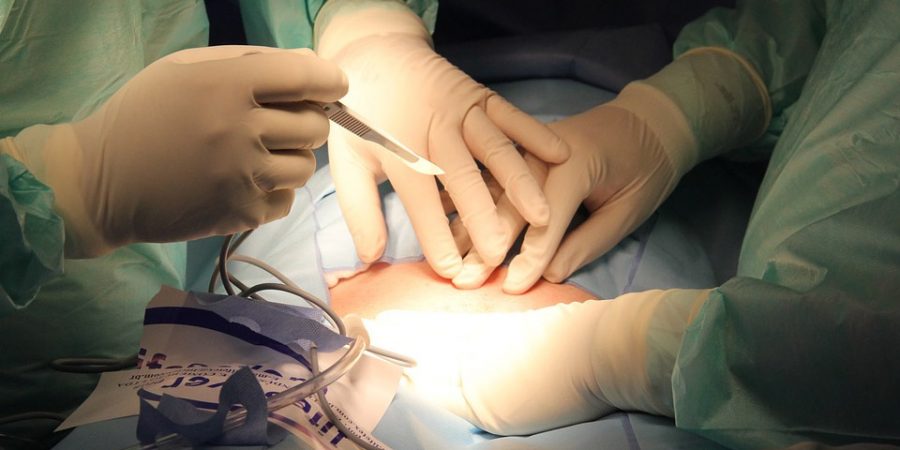Laparoscopic surgery is one the most noteworthy advancement in the field of surgery in recent years. This minimal access approach has been widely accepted and adopted for many types of surgeries. The benefits include decreased post-operative pain, shorter lengths of in-patient hospitalization, increased patient acceptance, and a more rapid return to normal routine. Though this procedure is considered to be highly reliable, it is unlikely that no errors can occur throughout this process, even in the simplest of cases. One can definitely say that lesser incision length, less incision pain, less hospital stay may not actually translate into less risk.
During an open surgery, surgeons can look at and touch the patient’s tissues directly using hands or relatively simple instruments. Their senses of vision, touch, and position are working under normal conditions and standard surgical instruments serve them well. During laparoscopic surgery, the situation is very different The surgeon indirectly views the operative field and can only touch the tissues with long instruments via ports that are in fixed positions. Their senses are now working much harder to achieve the same goals but in a much restricted environment that can result into risk of injuries or fatalities.
One of the major reasons for injury during a laparoscopic surgery is the failure to make the incision at the right location. It can take a novice surgeon years to master the skill of incision making. The most common injury caused by laparoscopic error is untreated internal bleeding that can cause infection, septic shock or death. Other injuries include complications that arise due to the wrong organs being nicked or lacerated during the procedure. This can result in organ failure and may require immediate action to save the patient’s life. For example, one of the most common surgical procedures in the country, performed on xxx patients annually, laparoscopic gallbladder removal has a record of success.However, under untrained hands, it carries a x%( at least five times higher than it is in open surgery) risk of nicking the common bile duct, which links the gallbladder, liver and small intestine that can result in liver failure. Seasoned surgeons, however, blame the inevitable awkwardness of novices for such mishaps. Along with other surgeries that rely on scopes—including gastric bypass, hernia repair and appendectomies—the “lap chole” has largely replaced open operations, helping hordes of patients avoid long and potentially expensive recoveries in hospitals.
Surgical expertise is a combination of skill, knowledge and the ability to follow rules. At LapGuru, we firmly believe that Psychologist Rasmussen’s Skill, Knowledge & Rule Error Model can be effective in ruling out errors during Laparoscopic surgeries. At the skill level, actions are automatic, and are enacted by way of “stored patterns of pre-programmed instructions”. These actions are frequently performed and are often said to ‘come naturally’ to the surgeon. However, these skills can be acquired with practice.
LapGuru offers a really wide range of surgical videos for every type of procedure. For example, if you want to learn lap chole, there are more than 300 videos that probably show you all the possible variations that you will typically encounter in a lap chole procedure. It applies to hernia, bariatric or any other procedure as well. The nuances of any surgical procedure can be learnt only when you watch more and more surgeries and variations in the pathology, LapGuru helps you achieve that.
On a rule level, tasks are completed using stored sets of rules. These rules consist of familiar, rehearsed patterns of actions. Tasks, which use rule-based cognitive mechanisms, require a greater degree of thought than skill-based tasks, as the rules that need to be applied to complete the situation must be selected. All the surgical videos on LapGuru have defined pre-op, in-op and post-op procedures described in details, which leaves no room for error.
On a knowledge level, unfamiliar tasks are performed with a high degree of conscious thought as the surgeon attempts to devise a novel solution to a situation, which has not previously been encountered. The surgical videos on LapGuru platform also have information on port positions, the precautionary measures to be taken during the procedure to boost your confidence as a budding surgeon. Live transmissions of surgeries performed by experts in their respective fields provide an excellent opportunity to interact with operating surgeons and ask questions to get deeper insights.
Don’t wait for a mistake to happen; Instead, Watch, Learn and Practice with LapGuru
About LapGuru
LapGuru is an online surgical video platform dedicated to creating a centralized source of laparoscopic surgery videos that are accessible to a wide audience, including students and doctors in different surgical disciplines. It allows users to learn new techniques for improving their surgical expertise as well as to communicate with the best in their field for knowledge and support.


Leave a Reply